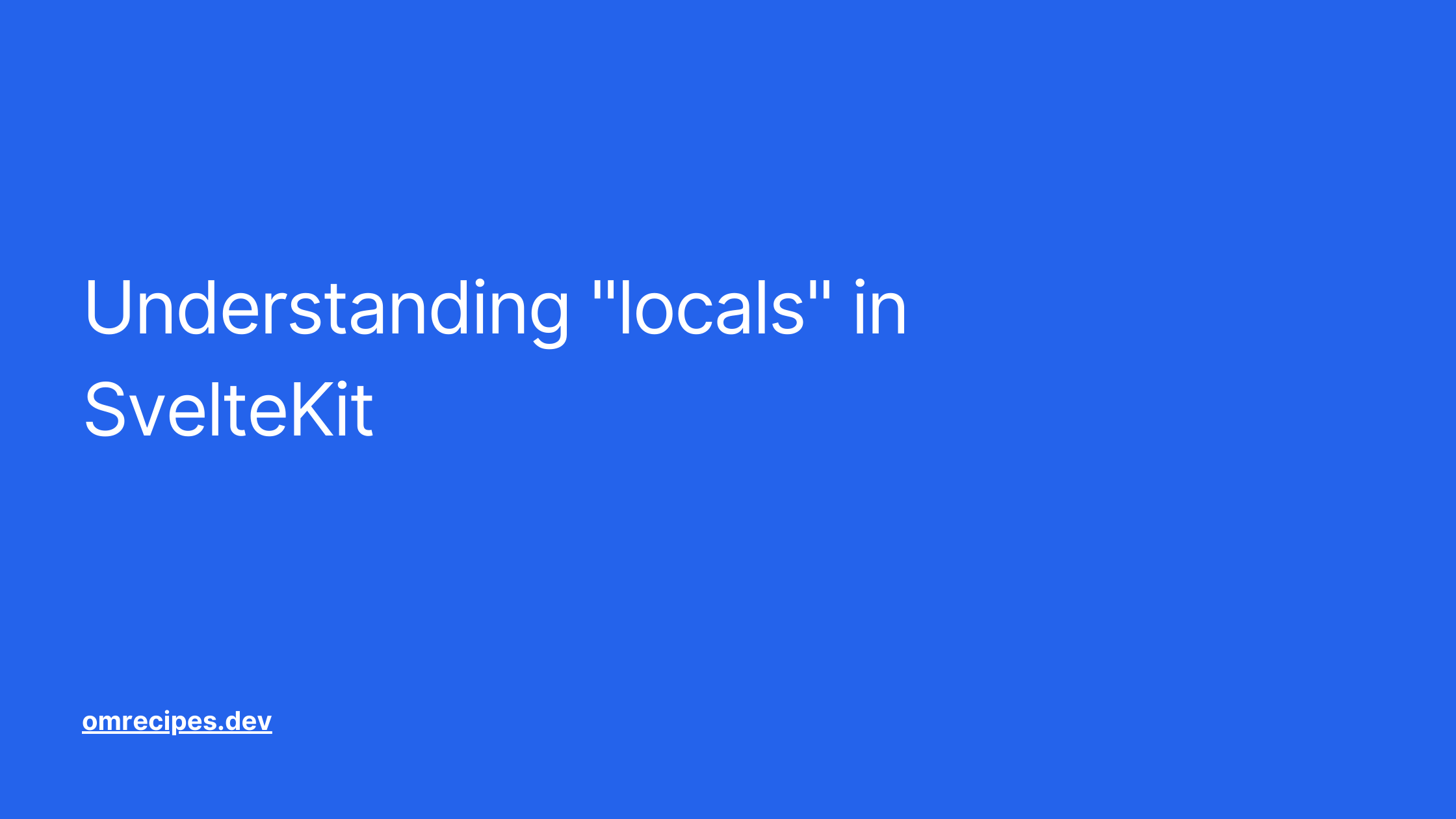Understanding "locals" in SvelteKit
Learn how to effectively use "locals" in SvelteKit to manage state, user sessions, and request-specific data. This guide covers setup, role management, form actions, and client-side data access with practical examples.

TL;DR
In SvelteKit, “locals” are objects that hold data specific to a single request , helping manage state, user sessions, and other information across the request lifecycle.
They enhance state management, security, and performance. This article explains what locals are, why they are important, and how to use them effectively, with practical examples for role management, form actions, and client-side data access.
What are “locals”?
In SvelteKit, locals are essentially an object that holds data specific to a single request .
This data is accessible throughout the lifecycle of a request, allowing you to manage state, user sessions, and other pertinent information in a streamlined manner.
Why use “locals” in the first place?
Using locals provides several benefits:
-
State Management : Locals allow you to store and manage data that persists throughout the lifecycle of a request. This is especially useful for session management, user authentication , and passing data between hooks and endpoints.
-
Security : By keeping sensitive data within the scope of a request, you can prevent it from leaking into the client-side code, enhancing your application's security.
-
Performance : Locals help maintain a clean and efficient state management system, reducing the overhead of repeatedly fetching or calculating the same data within a single request cycle.
Setting up “locals” in SvelteKit
To start using locals, you'll typically define them in your SvelteKit application's hooks. Let's go through an example of setting up locals for user session management.
Step 1: Defining the types
First, define the types for your locals in src/app.d.ts :
code loading...
This ensures that TypeScript is aware of the structure of your locals.
Step 2: Initializing locals in hooks
Next, use the handle hook to initialize and manage your locals. Create or update the src/hooks.server.ts file:
code loading...
In this example, we check for a session cookie, fetch the corresponding user from the database, and store the user information in event.locals .
Application Scenarios for “locals”
1. Authorization and Role Management
Locals can be used to manage user roles and perform authorization checks efficiently. For instance, to validate if a user is a super admin:
code loading...
Here, we check if the user is authenticated and if their role is superadmin . If not, we redirect them to the login page or throw a 403 Forbidden error.
2. Using “locals” in Form Actions
Locals can also be beneficial in form actions to validate user input and perform actions based on the user's session. Here’s an example of using locals in a form action:
code loading...
Here, we check if the user is authenticated using locals.user . If not, we return a 401 Unauthorized status. Otherwise, we process the form data.
3. Accessing “locals” in Client-Side Code
To use locals on the client side, you should return them in a load function and then use them in your components. Here’s how you can do that:
code loading...
In the corresponding Svelte component:
code loading...
Here, we return the locals.user data from the load function and use it in a Svelte component .
By exporting data in the component, you can access the user information and conditionally render content based on whether the user is authenticated.
Wrapping up
Understanding and utilizing locals in SvelteKit can significantly enhance the way you manage state and data across your application.
They provide a robust mechanism for handling request-specific information, improving both security and performance. By integrating locals into your SvelteKit projects, you can create more efficient and secure applications.
Whether you're managing user sessions, performing authorization checks, or handling form submissions, locals offer a powerful tool set to streamline your server-side logic. I hope this article helps you get a clear understanding of how to use locals in SvelteKit.
If you have any questions or comments, feel free to reach out to me on 𝕏 ( @iamsegbedji ) or by email on [email protected] .
Thanks for reading, and happy coding!